Great Yarmouth: Work to defuse WW2 bomb revised
- Published
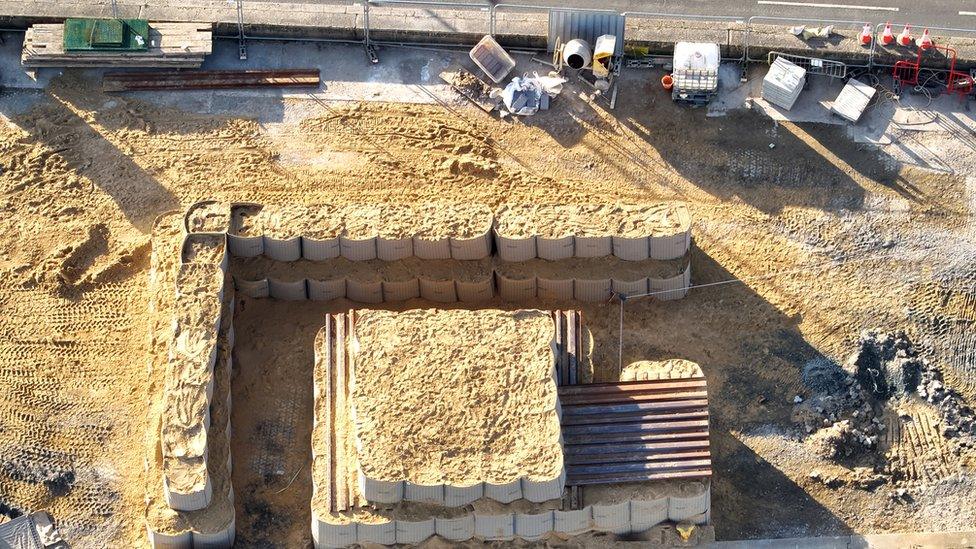
Police said Army disposal specialists were working on cutting into the bomb, which would take several hours
Bomb disposal experts are continuing the "challenging" work of defusing an unexploded World War Two device found in a Norfolk town.
The bomb was discovered on Southtown Road in Great Yarmouth on Tuesday.
Army specialists began cutting into it on Thursday but the water needed to do the work reduced the effectiveness of the sand barrier around the device.
Once this has been repaired, work "will continue to make the bomb safe", police said.
A spokesman said they were "hopeful a significant part of the operation will be finished today".
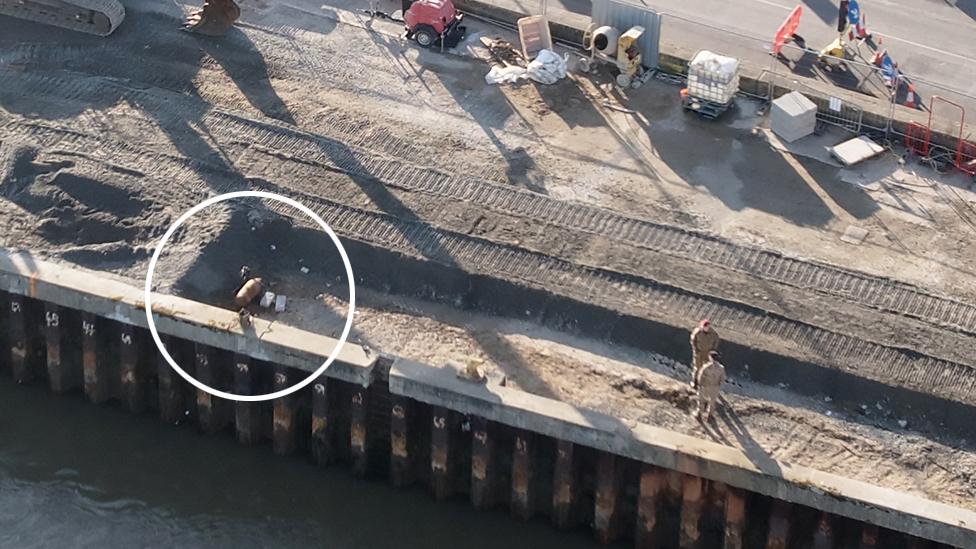
The device was discovered by a contractor working on a crossing over the River Yare
A sand wall was built around the bomb and a controlled detonation had been due to take place on Thursday before the remainder of the device would be moved out to sea or to a military range for another controlled explosion.
But the Army's Explosive Ordnance Disposal team found that a blast could potentially affect two gas main pipes and it went away to do further calculations.
Specialists started the defusing process by using a robot to cut the fuse and trigger at about 17:30 GMT on Thursday.
In a statement, police said: "Due to the need to use water in that work, the water has in part reduced the integrity of the sand box barrier.
"Following the assessment, work has started to repair the sand barrier to strengthen its ability to mitigate any unintended detonation."
It added that the repair work to the sand wall will take "a number of hours".
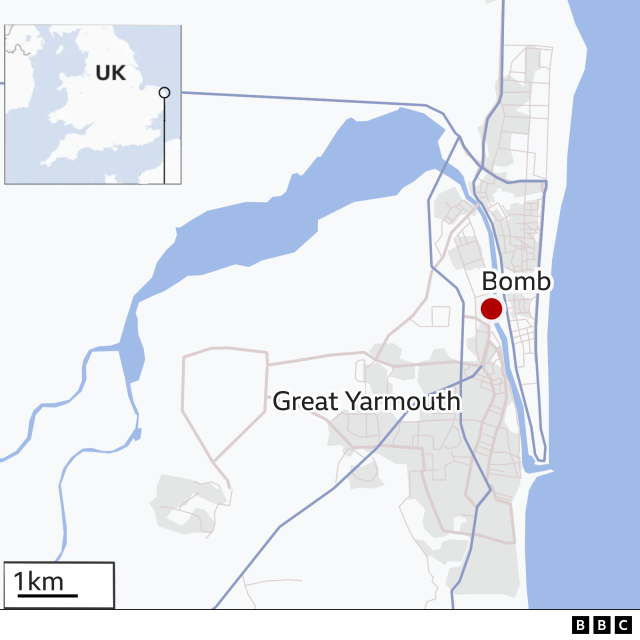
The device was discovered by a contractor working on the third crossing over the River Yare
The device - about 1m (3.2ft) long and weighing about 250kg (39st 5lbs) - was discovered by a contractor working on the third crossing over the River Yare.
Police ordered the evacuation of 230 properties in a 200m (656ft) inner cordon around Bollard Quay.
Those inside an outer cordon, which spans between 200-400m (1,312ft), have also been "strongly advised" to go elsewhere.

Hundreds of people asked to leave their properties have spent a third night away from their homes
Hundreds of people asked to leave their properties have spent a third night away from their homes, with two shelters being set up.
Norfolk's Assistant Chief Constable, Nick Davison, said: "We understand this has been an incredibly slow process, but it's needed to be for the safety of the public and those involved in disarming the device."
Several road closures remained in the area and a no-fly zone up to 2,000ft (610m) above ground has been put in place.
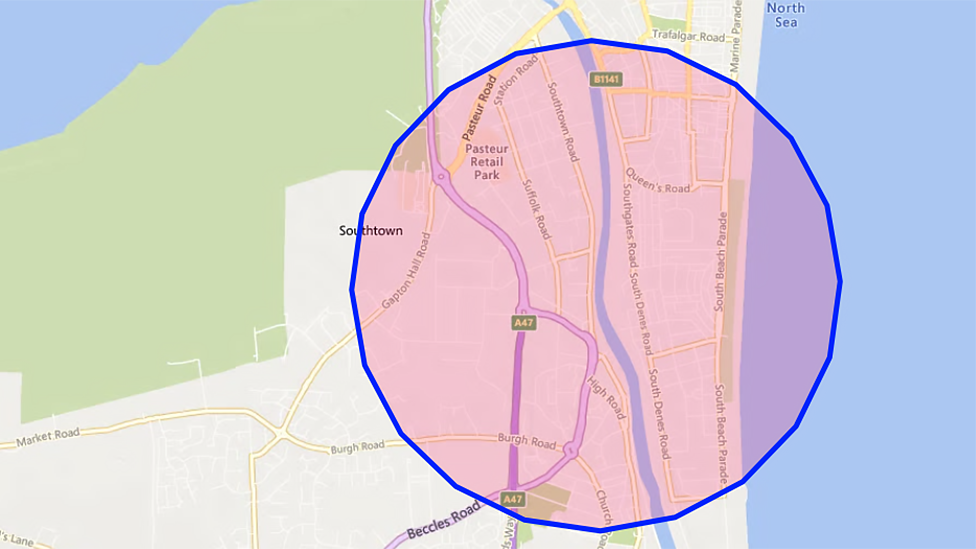
Police have put a temporary no-fly zone in place in Great Yarmouth
Rest centres have been opened at St George's Theatre in King Street and at Shrublands Youth and Adult Centre on Magdalen Way, Gorleston.
Great Yarmouth Borough Council chief executive, Sheila Oxtoby said the authority was "acutely aware how disruptive this has been" for residents.
Anyone who needs help with somewhere to stay will find temporary care at the Town Hall until 17:00 and they will be offered comfortable overnight accommodation and support.
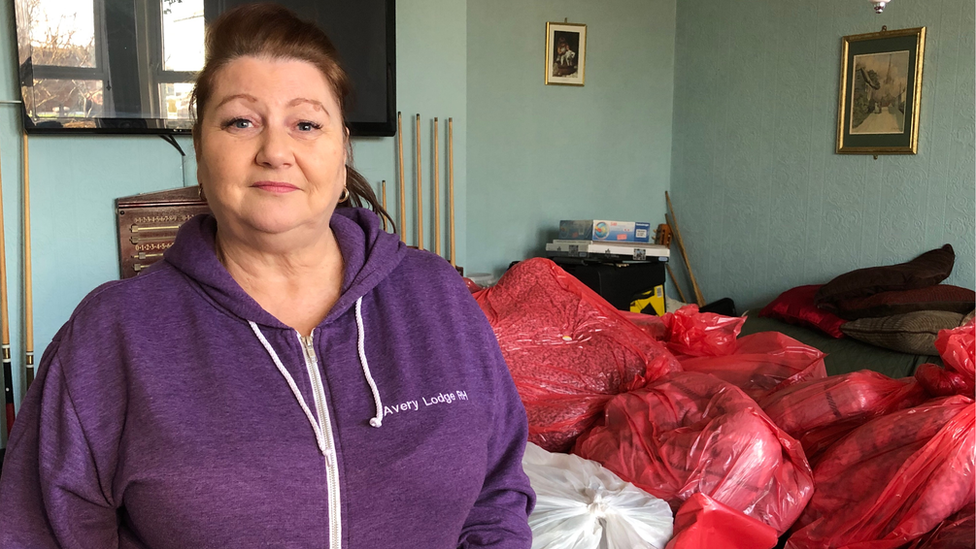
Sherylanne Hodgins, from Avery Lodge care home said it had been a "great relief" that residents had not yet had to leave
Residents of Avery Lodge Care Home, on the edge of the 400m exclusion zone, were moved to a safe site on Thursday before Norfolk County Council told them there was "not a suitable area" available for their clients' needs and equipment.
Manager Sherylanne Hodgins said it had been a "great relief" that the 14 vulnerable older residents could remain at the home.
"They've been able to remain in their own rooms, on bed care if they need it; they've felt safe; they've felt protected; they've felt cherished; they've felt loved," she said.

William Abbott said the rest centre had been "pretty good" but he and his wife "just want to get home"
William Abbott, 56, and his wife Lorraine, who live off Southtown Rd, have spent a third night at St George's rest centre and said it had been "pretty good, considering".
"The only thing I would say is that people want more information; they want to know what's going on, but overall people are quite upbeat," he said.
"I think we're all keeping each other amused one way or another."
People who require assistance with evacuation from the exclusion zone can call an emergency helpline on 01493 330369. Police said the number should not be used for general advice.

Is the bomb from a 1941 raid?
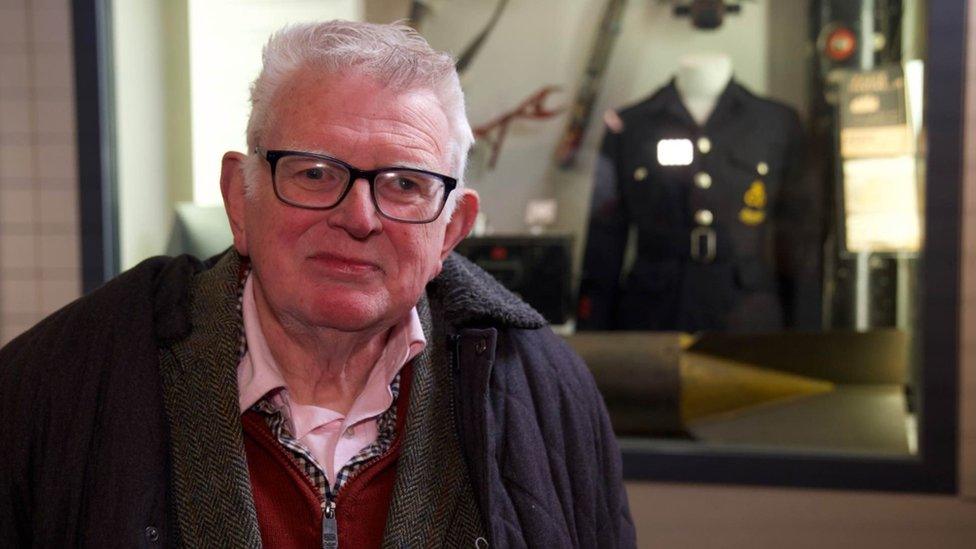
Andrew Fakes said the find could be an unexploded bomb from April 1941
Andrew Fakes, from the Great Yarmouth Local History and Archaeological Society, said he knew a man who had been a teenage firewatcher during World War Two who had talked about his experiences in the town, in particular the events of the night of 9 April 1941.
"He recalled how he saw a German bomber fly over the river and he thinks it dropped six bombs, but there were only five explosions known about," Mr Fakes said.
"He went and told the authorities he thought there was another live bomb in the river."
Mr Fakes added that they had a look but didn't find anything and asked the boy if they "expected them to close the whole harbour for just your thoughts on the matter".
"Perhaps this is his bomb that didn't actually explode," he said.
He added that they could have been aiming at minesweepers but he "didn't think bombing was a scientific art" during the war.
"They were young German airmen who wanted to get home as safely as they could, I suspect," he said.

Was Great Yarmouth a target?
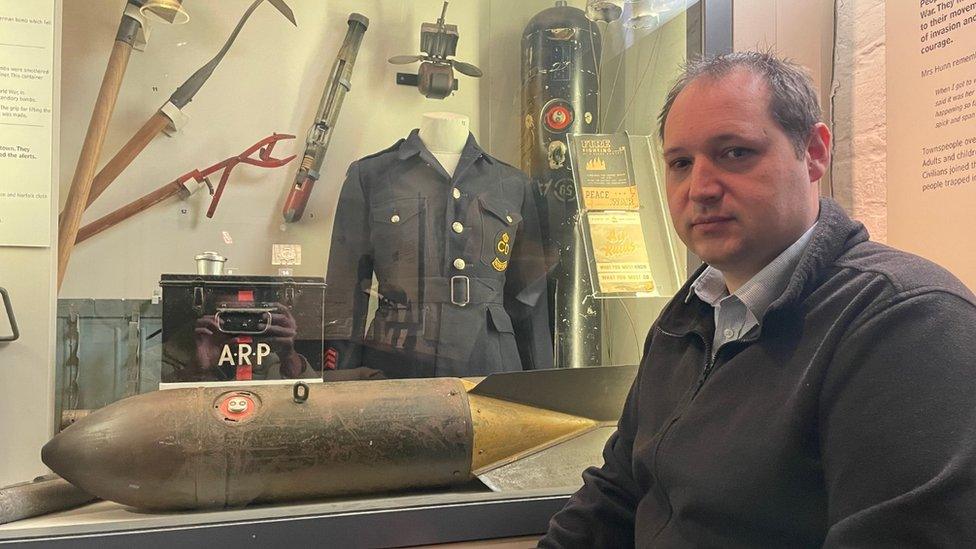
Philip Miles said the Time and Tides Museum has a "high explosive bomb" on display that is similar, but slightly smaller, to the one found
Philip Miles, from the Time and Tides Museum in the town, said Yarmouth "would probably have been a secondary target".
"There were certainly causes to hit the town, however, a lot of these high explosive bombs were destined for factories and allied airfields in East Anglia and [the more common aim was] to target them rather than civilians in Yarmouth," he said.
"I think where it's been found is quite telling as potentially one of the reasons why it hasn't gone off - it had a slightly softer landing to the bombs on that night [in 1941] that did go off."

Find BBC News: East of England on Facebook, external, Instagram, external and Twitter, external. If you have a story suggestion email eastofenglandnews@bbc.co.uk, external
Related topics
- Published9 February 2023

- Published9 February 2023
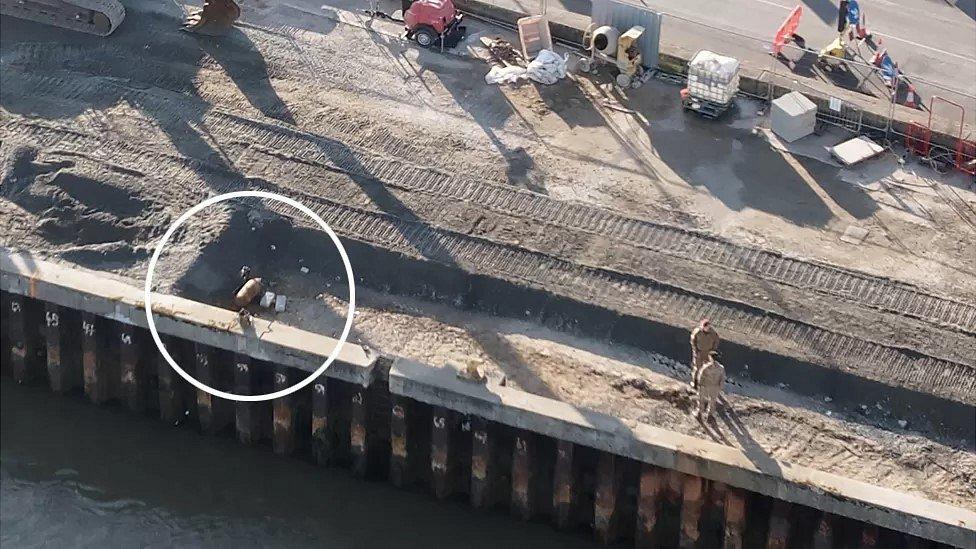
- Published8 February 2023
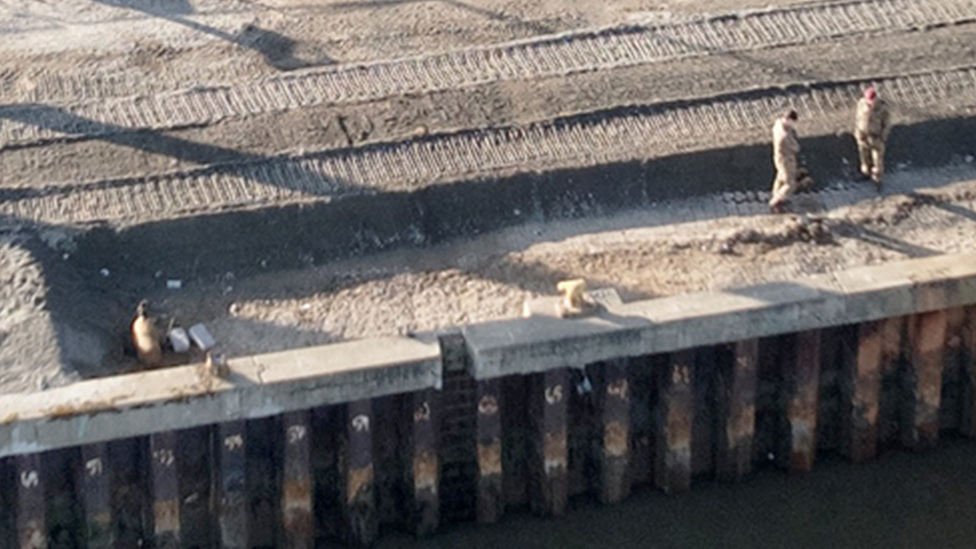
- Published11 May 2022

- Published5 January 2023